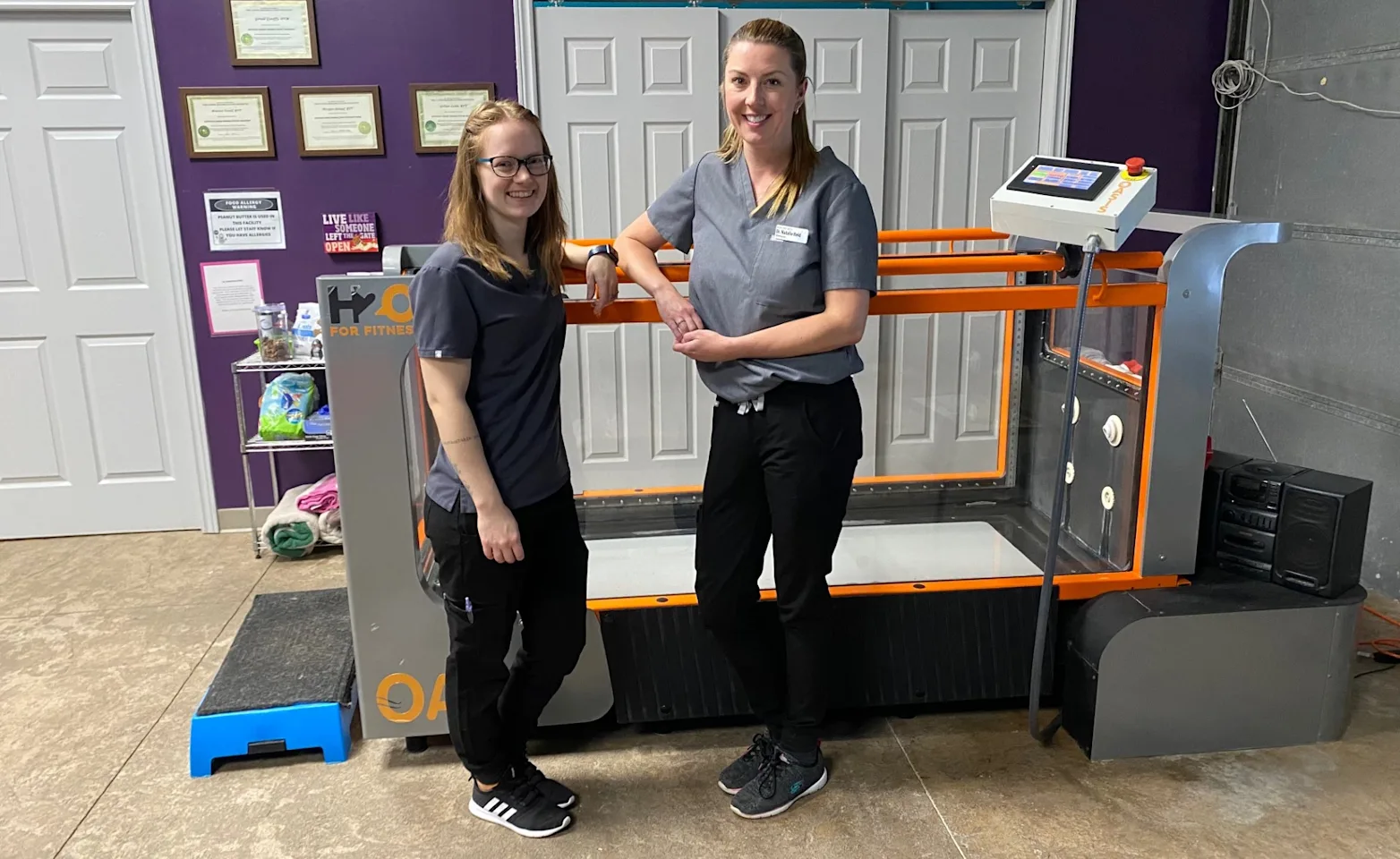Mitchell Animal Hospital

Rehabilitation Centre Hours
Monday: 10 am - 7 pm
Tuesday: 9 am - 1 pm
Wednesday: 9 am - 6 pm
Thursday: 10 am - 7 pm
Friday: 8 am - 5 pm
Sat: every other 9 am - 12 pm
Sun: CLOSED

What is Veterinary Rehabilitation?
Veterinary rehabilitation begins with the proper diagnosis of injuries, both orthopedic and soft tissue. The rehabilitation-trained veterinarian then uses manual therapy, therapeutic exercise and physical modalities (including electrical stimulation, LASER and (hydrotherapy) to speed and enhance recovery from debilitating injuries and degenerative conditions.
Veterinary rehabilitation incorporates advanced imaging techniques, regenerative medicine and state-of-the-art pain management techniques. Only a properly trained veterinarian, with advanced training, expertise—and most importantly—experience in the management of pain and loss of function through injury and illness, should manage the rehabilitation of an animal. Conditions that can be treated with physical therapy include: Osteoarthritis, hip problems, muscle injuries, spinal injuries, intervertebral disc disease, neuromuscular disease, fractures, cruciate injury, paralysis, paresis, limb amputation, shoulder OCD, elbow dysplasia, joint dislocation, patellar luxation, biceps tenosynovitis, achilles tendon rupture, tendon laceration and we can also help to attain and maintain peak fitness in athletes.
Underwater Treadmill
Hydro-treadmill therapy is primarily used in veterinary patients to enable early return to function and improve muscle strength after limb, neck, or back surgery or injury and improve range of motion in compromised joints. Hydro-treadmill therapy is also becoming more frequently used in animals for athletic conditioning and weight management. Orthopedic and neurologic patients can benefit from earlier return to function with underwater treadmill therapy. Benefits of hydro-treadmill therapy include:
It provides a reduced weight-bearing environment that increases functional use of a limb without marked weight loading and resultant discomfort.
Walking on an underwater treadmill once a week or more can help patients with muscle atrophy improve strength and mobility because of the increased resistance to forward motion.
Injured joints often show reduced range of motion. Underwater treadmill walking allows a correct but exaggerated gait pattern, which improves joint flexion, and to a lesser degree, extension.

Therapy Lasers
Therapy lasers employ light energy that penetrates into targeted tissues to rapidly act on inflammation, stimulating blood and lymphatic circulation and inducing fast re-absorption of fluids. They are able to produce analgesia, interfering with the very transmission of the pain impulse to the higher brain centers. Conventional laser therapy has been in use for more than 25 years. More than 3,000 scientific publications test its effectiveness and the validity of this approach. It has been demonstrated that it is not toxic and it has no side effects.
Laser therapy is used most often to treat:
Arthritis (Degenerative Joint Disease)
Back Pain (Intervertebral Disc Disease)
Trauma (Skin, Muscle, Bone)
Wounds (Trauma)
Surgery (Incisions, Growth Removals, Bone Surgery)
Inflammatory Conditions
Naythene's Spinal Rehabilitation
Naythene is one of our greatest success stories. Please take a moment to watch their journey.
Tigger's Rehabilitation Journey
Tigger had surgery to repair a knee injury in December 2022 and started seeing us for rehabilitation the following January. He progressed very well after his surgery and in just 10 weeks he was able to graduate from our rehab program and slowly return to normal activity at home. At 10 years old that's pretty impressive! Way to go Tigger!
